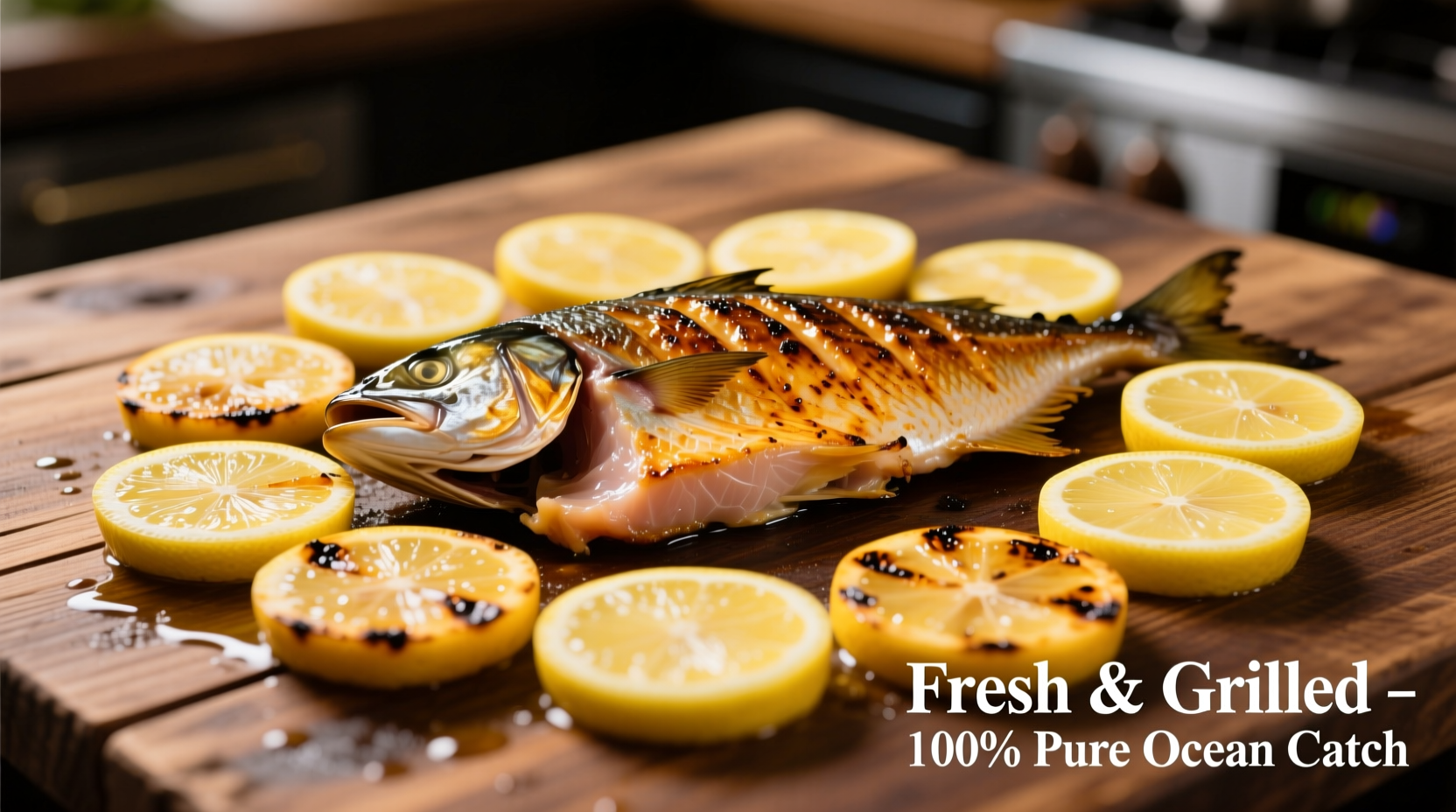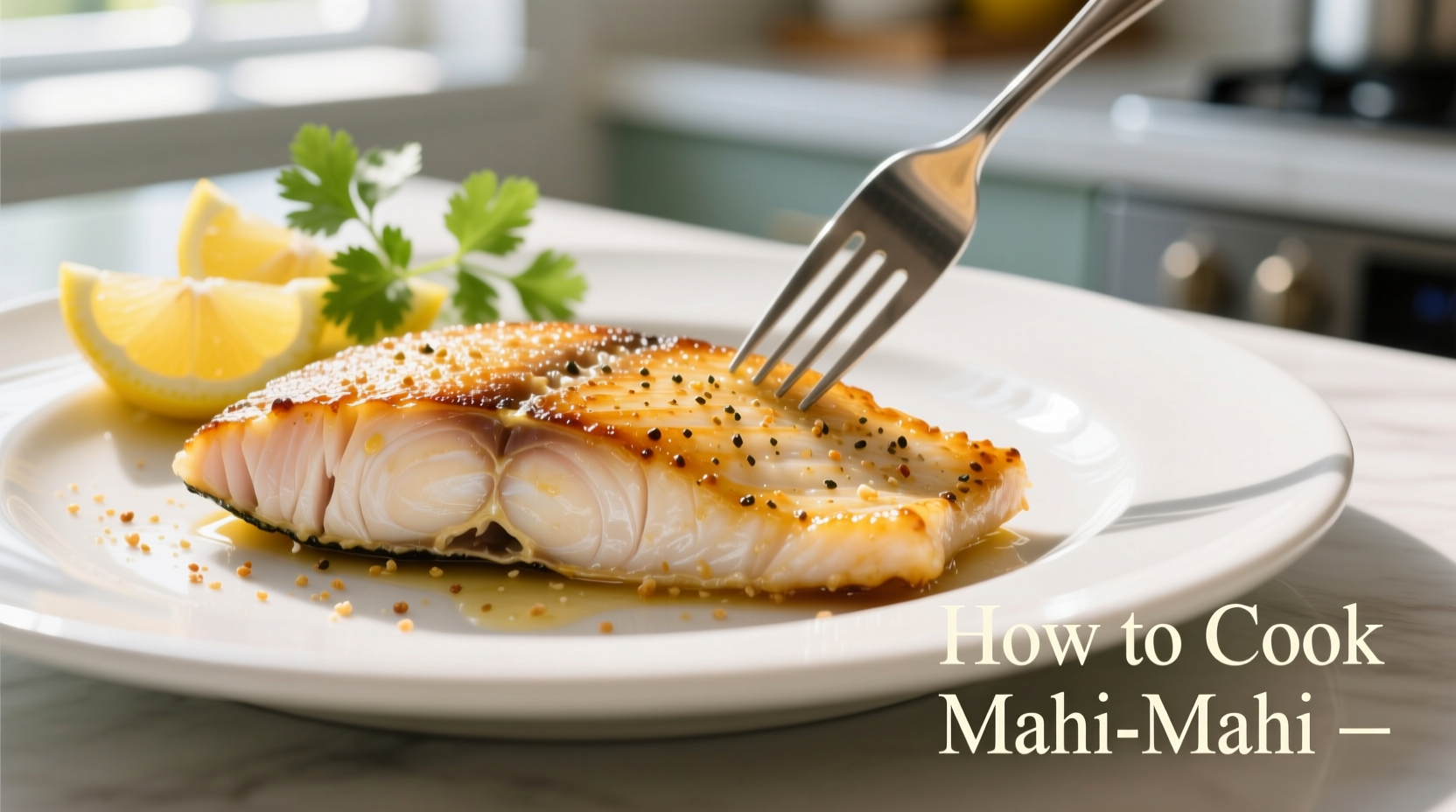When you're standing in front of that beautiful cut of mahi mahi at the market, wondering exactly how to transform it into a restaurant-quality meal, you need clear, reliable guidance. This comprehensive guide delivers precisely what home cooks require: tested techniques, precise timing, and professional tips that guarantee perfectly cooked fish every time—no guesswork required.
Understanding Mahi Mahi's Unique Qualities
Mahi mahi (also known as dolphinfish) has firm, lean flesh with large flakes and a mild, sweet flavor profile that sits between swordfish and halibut. Its texture holds up well to various cooking methods, making it incredibly versatile for home cooking. Unlike more delicate fish varieties, mahi mahi won't fall apart easily during preparation, which is why it's become a favorite among both novice and experienced cooks.

Selecting Quality Mahi Mahi
Your cooking success begins long before you heat your pan. When selecting mahi mahi, look for:
- Firm, springy flesh that bounces back when gently pressed
- Bright, clear eyes if purchasing whole fish
- A fresh, ocean-like scent (never fishy or ammonia-like)
- Moist appearance without excessive drying or browning
Fresh mahi mahi should be cooked within 1-2 days of purchase, while frozen quality cuts maintain excellent texture when properly thawed in the refrigerator overnight.
Essential Preparation Steps
Before cooking, properly prepare your mahi mahi with these critical steps:
- Rinse fillets under cold water and pat completely dry with paper towels
- Remove any remaining bones using tweezers
- Score thicker fillets diagonally to ensure even cooking
- Season with salt 15-20 minutes before cooking to enhance texture
| Cooking Method | Temperature | Time per Inch | Doneness Indicator |
|---|---|---|---|
| Pan-searing | Medium-high heat | 3-4 minutes per side | Golden crust, flakes separate easily |
| Grilling | 400-450°F | 4-5 minutes per side | Slight charring, pulls away from grate |
| Baking | 400°F | 10-15 minutes | Reaches 145°F internally |
| Broiling | High setting | 5-7 minutes | Top is golden, edges curl slightly |
Mastering Different Cooking Methods
Pan-Searing for Restaurant-Quality Results
This technique creates a beautiful crust while keeping the interior moist. Heat 1-2 tablespoons of high-smoke point oil (avocado or grapeseed) in a heavy skillet until shimmering. Place seasoned fillets in the pan without crowding. Cook undisturbed for 3-4 minutes until a golden crust forms, then flip and finish cooking for another 3-4 minutes. For thicker cuts, finish in a 400°F oven for 2-3 minutes.
Grilling Mahi Mahi Perfectly
Grilling enhances mahi mahi's natural sweetness. Preheat your grill to medium-high (400-450°F) and clean the grates thoroughly. Brush fillets with oil to prevent sticking. Place fish at a 45° angle to the grates for attractive sear marks. Grill for 4-5 minutes per side, flipping only once. The fish is done when it releases easily from the grill and reaches 145°F internally. For added flavor, use a cedar plank or wrap in banana leaves.
Baking for Foolproof Results
Baking requires minimal attention while delivering consistent results. Preheat oven to 400°F. Place seasoned fillets on a parchment-lined baking sheet. For moist results, add a splash of broth or citrus juice to the pan. Bake for 10-15 minutes (depending on thickness) until the fish flakes easily. The USDA Food Safety and Inspection Service recommends cooking fish to an internal temperature of 145°F or until the flesh appears opaque throughout, which you can verify with an instant-read thermometer.
Knowing When Mahi Mahi Is Perfectly Cooked
Overcooked mahi mahi becomes dry and loses its delicate flavor. Use these indicators to determine perfect doneness:
- Temperature: 145°F at the thickest part (USDA Food Safety recommendation)
- Texture: Flakes easily with fork but maintains structure
- Color: Translucent pink becomes opaque white
- Time: Approximately 10 minutes per inch of thickness
Remember that fish continues cooking after removal from heat (carryover cooking), so remove it from heat when it's just shy of your target doneness.
Flavor Pairings That Shine
Mahi mahi's mild flavor pairs beautifully with bright, acidic elements and fresh herbs. Consider these combinations:
- Citrus: Lime, lemon, or orange with cilantro and jalapeño
- Tropical: Mango salsa, pineapple, and coconut milk
- Mediterranean: Olive oil, garlic, tomatoes, and fresh basil
- Caribbean: Allspice, thyme, and rum-based glazes
Avoid heavy sauces that overwhelm the fish's delicate flavor. Instead, finish with a squeeze of fresh citrus and a sprinkle of fresh herbs just before serving.
Food Safety Considerations
Proper handling ensures your mahi mahi remains safe to eat. The FDA recommends storing raw fish at 40°F or below and using within 1-2 days. Always thaw frozen fish in the refrigerator, never at room temperature. When marinating, keep fish refrigerated and discard used marinade that contacted raw fish. Leftovers should be refrigerated within two hours and consumed within 3-4 days.
Common Mistakes to Avoid
Even experienced cooks sometimes make these errors with mahi mahi:
- Overcooking: This lean fish dries out quickly beyond 145°F
- Crowding the pan: Causes steaming instead of proper searing
- Not drying the surface: Prevents proper crust formation
- Using low-quality oil: Choose oils with high smoke points for searing
Remember that cooking times vary based on thickness—always use a thermometer for precision rather than relying solely on timing.











 浙公网安备
33010002000092号
浙公网安备
33010002000092号 浙B2-20120091-4
浙B2-20120091-4